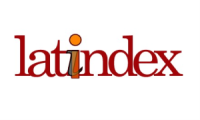Angiogenesis stimulation in bacteria-infected acute wound healing with honey treatment in BALB/C mice
Abstract
The use of honey for wound healing has been carried out several times, but until now no one has compared the effectiveness of honey from various types of honey found in Indonesia for stimulating the formation of new blood vessels (Angiogenesis) in acute wounds infected with bacteria. The other side of wound healing that will be observed in this study is that wounds are often exacerbated by conditions of infection due to bacteria. The purpose of this study was to determine the level of stimulation of wound healing by treating honey in acute wounds infected with bacteria. This study was divided into 4 groups, namely the control group (K-MD), the first treatment group with Javanese Honey (MD-JW), the second treatment group with Kalimantan Forest Honey (MD-KLM) and the third treatment group with NTT Honey. (MD-NTT). In the results of the study, the highest VEGF levels were found in the MD-NTT group, followed by the MD-JW group, then the MD-KLM group and the lowest were in the K-MD group. The OneWay Anova test obtained p>0.05 and the Post Hoc LSD test showed that the average VEGF levels in the MD-NTT, MD-JW and MD-KLM groups were significantly higher than the K-MD group (p <0.05). In this study, it can be concluded that giving honey from NTT can increase Vascular Endothelial Growth Factor (VEGF) levels better than honey from Java and Kalimantan in healing acute wounds infected with bacteria in BABL/C mice.
Downloads
References
R. F. Diegelmann & M.C. Evans, “ Wound healing: an overview of accute, fibrotic and delay healing”, Front biosci, 9(1), 283-289.2004.
S. S. Ramasastry, “Acute wounds”, Clinics in plastic surgery, 32(2), 195-208.2005.
K. E. Johnson and T. A. Wilgus, "Vascular endothelial growth factor and angiogenesis in the regulation of cutaneous wound repair," Advances in wound care 3.10: 647-661.2014.
A. Simon, K. Traynor, K. Santos, G. Blaser, U. Bode and P. Molan, “Medical honey for wound carestill the latest resort,” Evidence-Based Complementary and Alternative Medicine,vol. 6, no. 2, pp. 165–173.2009.
P. C. Molan, “The evidence supporting the use of honey as a wound dressing,” International Journal of Lower Extremity Wounds, vol. 5, no. 1, pp. 40–54.2006.
P. B. Olaitan, O. E. Adeleke, and I. O. Ola, “Honey: a reservoir for microorganisms and an inhibitory agent for microbes,” African Health Sciences, vol. 7, no. 3, pp. 159–165.2007.
R. Ghaderi, M. Afshar, H. Akhbarie, and M. J. Golalipour, “Comparison of the efficacy of honey and animal oil in accelerating healing of full thickness wound of mice skin,” International Journal of Morphology, vol. 28, no. 1, pp. 193–198.2010.
R. M. Zohdi, Z. A. B. Zaria, N. Yusof, N. M. Mustapha, and M. N. H. Abdullah, “Gelam (Melaleuca spp.) honey-based hydrogel as burn wound dressing,” Evidence-Based Complementary and Alternative Medicine, vol. 2012, Article ID 843025, 7 pages.2012.
O. A. Moore, L. A. Smith, F. Campbell, K. Seers, H. J. McQuay, and R. A. Moore, “Systematic review of the use of honey as a wound dressing,” BMC Complementary and Alternative Medicine, vol. 1, article no. 2.2001.
E.N. Sofyanita and R. Afriansya, “Differences Of Inhibition Zone Forest Pure Honey And Cinnamon (Cinnamomum burmani) As Antibacterial Bacterial Compounds Of Members Of The Enterobacteriaceae Family”, Journal of Health Research, 10 (1), 7-11.2021.
E. N. Sofyanita, T. Nasihun, and S. T. Zulaikhah, “The Effect of CMCE Propolis Extract on FSH, LH, and Testosterone Levels in MSG-Induced Male Wistar Rats”. Science Medika Journal of Medical & Health , 10 (2).2019.
Y. Iuchi, D. Roy, F. Okada, N. Kibe, S. Tsunoda, S. Suzuki and J. Fujii, "Spontaneous skin damage and delayed wound healing in SOD1-deficient mice." Molecular and cellular biochemistry 341: 181-194.2010.
P. C. Molan, "Honey: Antimicrobial actions and role in disease management.": 229-253.2009
N. T. Mustafa, D. K. Ikliptikawati, and A. W. Jamaluddin, "Perbandingan Pemberian Madu Lokal Bunga Cengkeh (Syzygium aromaticum) dan Madu Impor Bunga Manuka (Leptospermum scoparium) Secara Topikal Terhadap Penyembuhan Luka Sayat Pada Mencit Putih (Mus musculus)," Jurnal Pharmascience 6.2: 25-32.2019.
M. F. W. Nasution, & Yenita, “Uji Efektivitas Madu Dibandingkan dengan Povidone Iodine terhadap Penyembuhan Luka Sayat pada Mencit (Mus Musculus)”, JIMKI, 8(3).2021.
H. N. Wijayanti, “Pengaruh Pemberian Tnf-Α Dosis Rendah Pada Mesenchymal Stem Cells Terhadap Kadar Vegf (Studi Eksperimental In Vitro Perbandingan Pemberian TNF-α Recombinant dengan Dosis 10 ng/ml, 5 ng/ml dan 2, 5 ng/ml pada Mesenchymal Stem Cells)”, Diss. Fakultas Kedokteran UNISSULA.2018.
R. Zhafirah, A. N. Aida, H. Hirawan, and T. Wardana, “Wound healing induces VEGF expression stimulated by forest honey in palatoplasty Sprague Dawley”, Dental Journal, 56(1).2023.
W. Wizni “Pengaruh Wound Healing Sheet Ekstrak Aloe vera dan Albumen Telur Ayam Kampung (Gallus domesticus) terhadap Jumlah Limfosit pada Luka Insisi Gingiva”, Diss. Universitas Jenderal Soedirman.2023.
W. P. Vermeij and C. Backendorf, “Skin Cornification Proteins Provide Global Link between ROS Detoxification and Cell Migration during Wound Healing”, PLOS ONE. 5(8); e11957; 1-7.2010
E. M. Asroel,” Pengaruh Pemberian Madu Terhadap Perubahan Kadar Soluble Fms-Like Tyrosine Kinase (Sflt-1), Soluble Endoglin (Seng), Vascular Endothelial Growth Factor (Vegf), Placental Growth Factor (Plgf), Tumor Necrosis Factor Alpha (Tnf-Α), Dan Interleukin 6 (Il-6) Pada Tikus Model Preeklamsia”, Diss. Universitas Sumatera Utara, 2020.
Copyright (c) 2023 ITEGAM-JETIA

This work is licensed under a Creative Commons Attribution 4.0 International License.











